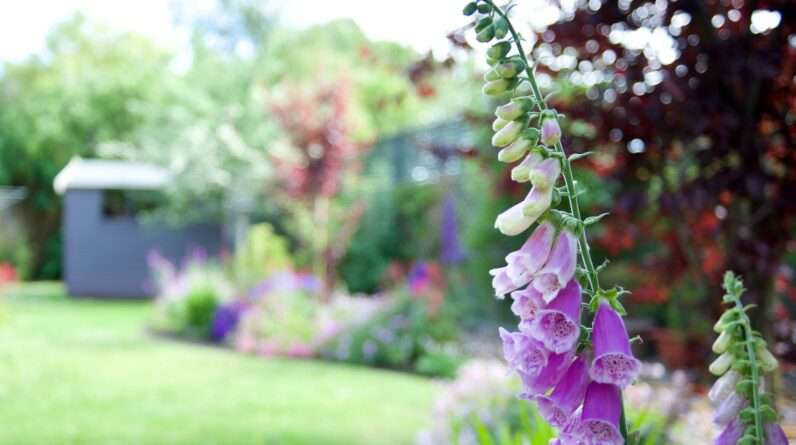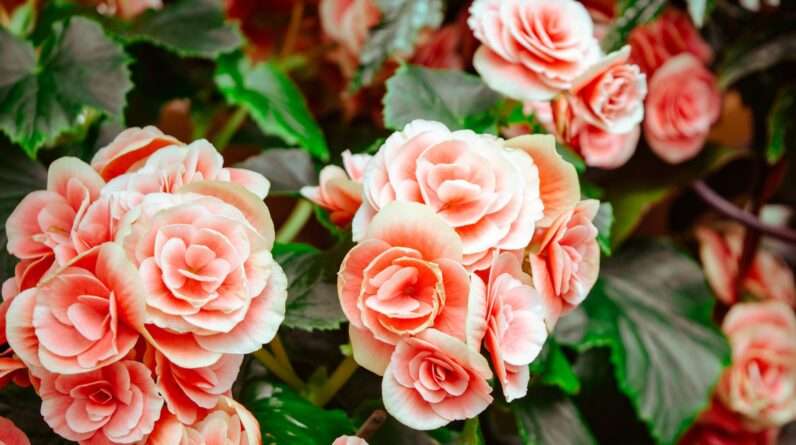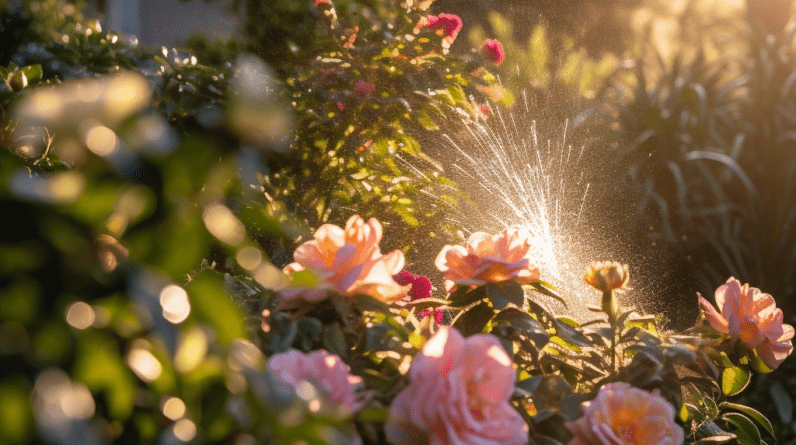
You may have noticed that your flowers and shrubs are starting to look a little overgrown and unruly as summer rolls on. Don’t worry, you’re not alone. Many gardeners find themselves in the same position this time of year.
The good news is that with a little bit of summer pruning, you can help your plants stay healthy and vibrant throughout the season. Coincidentally, summer pruning can also help you maintain a tidy and attractive garden. By cutting back overgrown branches and deadheading spent blooms, you’ll create a neater, more organized appearance that’s sure to impress your guests.
Plus, by removing diseased or damaged parts of the plant, you’ll be promoting overall plant health and preventing the spread of infections. So, whether you’re a seasoned gardener or a newcomer to the hobby, read on for some tips on how to make the most of your summer pruning efforts.
Key Takeaways
- Prune every 6-8 weeks for optimal growth and flowering, and after flowering.
- Use different types of pruning tools for different types of pruning tasks, and ensure they are clean and sharp.
- Specific techniques for pruning different types of plants are important for optimal growth and flowering.
- Over-pruning and under-pruning can both have negative effects on the health and appearance of plants, so it’s important to find the right balance.
Understanding the Benefits of Summer Pruning
You’re going to love summer pruning because it’ll help your flowers and shrubs thrive and look their best! Pruning frequency is important for maintaining healthy plant growth, and summer is the perfect time to do it.
By removing dead or damaged branches, you’re allowing your plants to focus their energy on new growth and flowering. Plus, summer pruning can help control the size and shape of your plants, making them more aesthetically pleasing in your garden.
To get started with summer pruning, you’ll need the right pruning tools. A good pair of pruning shears is essential for cutting back smaller branches, while a pruning saw will be necessary for larger ones. There are also specialized pruning tools available, such as hedge shears for shaping shrubs and loppers for thicker branches. Make sure to keep your tools clean and sharp for the best results.
Now that you understand the benefits of summer pruning and have the right tools, it’s time to identify the right time to prune. This will vary depending on the type of plant you have, but a general rule of thumb is to prune after flowering. This will ensure that you’re not removing any potential blooms for the season.
With these tips in mind, you’ll be well on your way to healthy, beautiful plants in your garden.
Identifying the Right Time to Prune
When it’s time to trim back your plants, it’s important to know the right moment to start. Pruning frequency is crucial to maintaining the health and appearance of your flowers and shrubs. But how often should you prune? The answer depends on the type of plant and its growth rate.
Generally, summer pruning is recommended to be done every six to eight weeks to ensure optimal growth and flowering. To make the most out of your summer pruning, it’s important to have the right pruning tools. Secateurs, loppers, and pruning saws are essential for different types of pruning tasks. For smaller branches and stems, use secateurs. For thicker branches, loppers are perfect. And for tougher cuts, a pruning saw will do the job. Keep your tools sharp and clean to prevent damage to your plants and to ensure a clean cut.
Knowing when to prune and having the right tools is just the beginning. Understanding the techniques for pruning different types of plants is equally important. Whether you’re trimming back your roses, shaping your hedges, or pruning your fruit trees, there are specific methods that will yield the best results.
So let’s dive into the different techniques for pruning and shaping your plants.
Techniques for Pruning Different Types of Plants
To achieve optimal growth and flowering, it’s important to understand the specific techniques for pruning different types of plants. Pruning can be done with a variety of tools, such as secateurs, loppers, and pruning saws, but it’s crucial to make clean cuts to avoid damaging the plant. Here are some pruning Dos and Don’ts to keep in mind:
| Type of Plant | Pruning Technique | Common Mistakes to Avoid |
|---|---|---|
| Shrubs | Cut just above a bud facing outward | Removing more than 1/3 of the plant |
| Trees | Remove dead, diseased, or crossing branches | Cutting too close to the trunk |
| Roses | Cut at a 45-degree angle above a bud | Pruning too late in the season |
It’s also essential to know some common pruning mistakes to avoid. One mistake is pruning too much or too little. Over-pruning can weaken the plant and result in fewer flowers or fruit, while under-pruning can lead to a messy and overgrown plant. Another mistake is cutting too close to the trunk, which can damage the tree or shrub and make it more susceptible to pests and diseases.
Now that you know the specific techniques and common mistakes to avoid, it’s time to learn about the tips for maintaining plant health during pruning. Remember, pruning is not just about cutting off branches, but it’s also about shaping the plant and promoting its health.
Tips for Maintaining Plant Health During Pruning
Don’t let improper pruning harm your beloved plants – follow these tips to keep them healthy and thriving.
When pruning your flowers and shrubs, it’s important to use the right pruning tools. Using the wrong tools can damage the plant, making it more susceptible to pests and diseases. Make sure to use sharp, clean tools that are appropriate for the size and type of plant you’re pruning.
Another common mistake when pruning is cutting too much off at once. This can stress the plant and weaken it, making it more vulnerable to disease and pests. Instead, follow the “one-third rule” – never remove more than one-third of the plant at a time. This will help your plant recover more quickly and maintain its health.
To further promote plant health during pruning, there are a few additional tips to keep in mind. First, make sure to prune at the right time of year – for most plants, summer is the best time for pruning. Second, avoid pruning during hot, dry weather, as this can cause additional stress on the plant. And finally, always make clean cuts – jagged or torn cuts can make it harder for the plant to heal and may increase the risk of infection.
By following these tips, you can help ensure that your plants stay healthy and strong during the pruning process.
In the next section, we’ll discuss how to maximize the results of your summer pruning efforts.
Maximizing the Results of Your Summer Pruning Efforts
Get ready to see your plants flourish like never before! Have you considered how proper pruning techniques can encourage new growth and improve the overall shape of your garden? Summer pruning is an essential part of maintaining your garden and keeping it healthy. However, if you want to make the most of your pruning efforts, you need to know how to use your pruning tools effectively and avoid common pruning mistakes.
One of the most important aspects of successful pruning is using the right tools for the job. Make sure your pruning shears are sharp, and consider investing in a pruning saw for thicker branches. Using dull tools can lead to ragged cuts that take longer to heal, leaving your plants more vulnerable to disease and pests. Additionally, make sure to sanitize your tools between uses to prevent the spread of disease.
To maximize the results of your summer pruning efforts, it’s important to avoid common pruning mistakes. One of the most common mistakes is over-pruning, which can weaken your plants and stunt growth. Another mistake is leaving too much dead wood on your plants, as this can also hinder new growth. It’s also important to avoid pruning your plants during periods of stress, such as during a heatwave or drought, as this can further stress your plants and lead to damage.
By following these tips for using your pruning tools and avoiding common pruning mistakes, you can help your plants thrive and keep your garden looking beautiful all summer long. Remember, proper pruning techniques can encourage new growth and improve the overall shape of your garden, so don’t be afraid to get out there and get pruning!
Frequently Asked Questions
Can summer pruning be done on all types of plants?
Summer pruning benefits all types of plants, but it’s important to do it at the right time. The best time for summer pruning is when the plant is actively growing. This will help promote healthy growth and keep your landscape looking beautiful.
What tools are necessary for summer pruning?
You’ll need to arm yourself with the right pruning techniques and tools for a successful pruning experience. The frequency of pruning depends on the type of plant. Remember, pruning is like sculpting – carefully shaping the plant to reveal its beauty.
Is it safe to prune during hot weather?
Yes, it’s safe to prune during hot weather as long as you follow proper pruning techniques. There are benefits of summer pruning such as removing dead or diseased branches, improving air circulation, and encouraging new growth.
How long does it take for plants to recover from summer pruning?
Oh, it only takes a few hours for plants to recover from summer pruning. But wait, there’s more! Pruning benefits abound when you follow recommended techniques. Factors affecting recovery time include plant type and health.
Can summer pruning be done on newly planted shrubs and flowers?
Yes, summer pruning can be done on newly planted shrubs and flowers. It’s actually beneficial for promoting healthy growth and shaping. Just be sure to follow best practices for newly planted growth, such as not removing more than a third of the plant.







